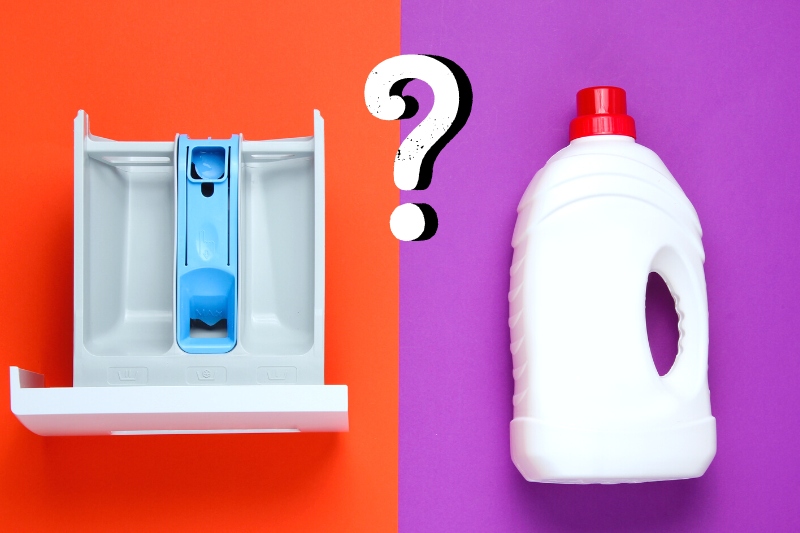Using a washing machine can be confusing, especially if you’ve never done it before or have a new appliance.
With so many different settings and compartments, it’s not hard to get in a muddle about where things need to go and which buttons need to be pressed!
One laundry product that many people are unsure of is fabric softener.
Nowadays, many laundry detergents can be placed directly in the drum along with your washing, but it can be hard to know where to put fabric softener in the washing machine.
The answer to this question depends on whether you own a front-loading or top-loading washing machine.
Detailed instructions on how to use fabric softener in both of these appliances are given below, as well as some general information about the benefits of fabric softener and when it needs to be avoided.
Where to Put Fabric Softener in Front-Loading Washing Machines
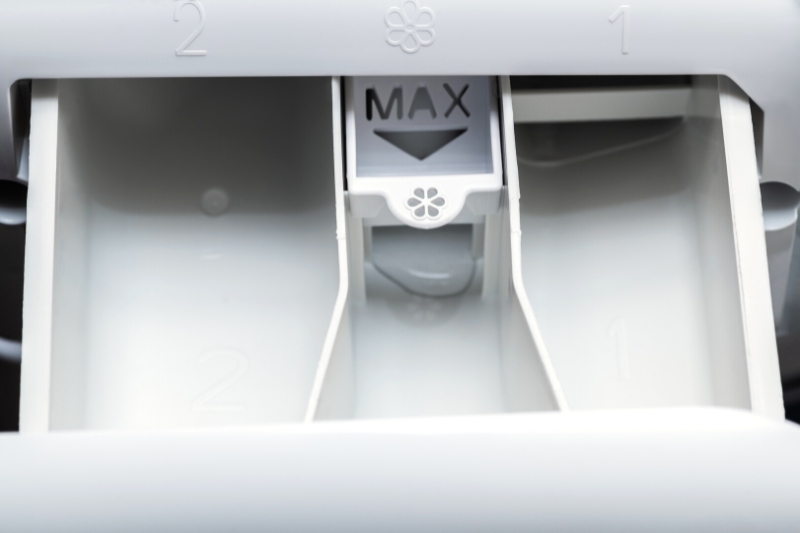
All front-loading washing machines will have a dispenser drawer that is used to add any laundry products to the machine.
This drawer will contain three separate compartments, one each for detergent, fabric softener, and pre-wash products.
To help you identify which compartment is for which product, they will be clearly labelled. The one for fabric softener is labelled as “3” and will typically have a star or flower symbol printed on it.
However, although these are the most common indicators, some brands may use slightly different symbols. If at all unsure, it’s always best to check your instruction manual.
Once you have located the correct compartment, you simply need to pour in the required amount of fabric softener before starting your wash cycle.
Your washing machine will then release the softener into the drum at the right point in the cycle.
Where to Put Fabric Softener in Top-Loading Washing Machines
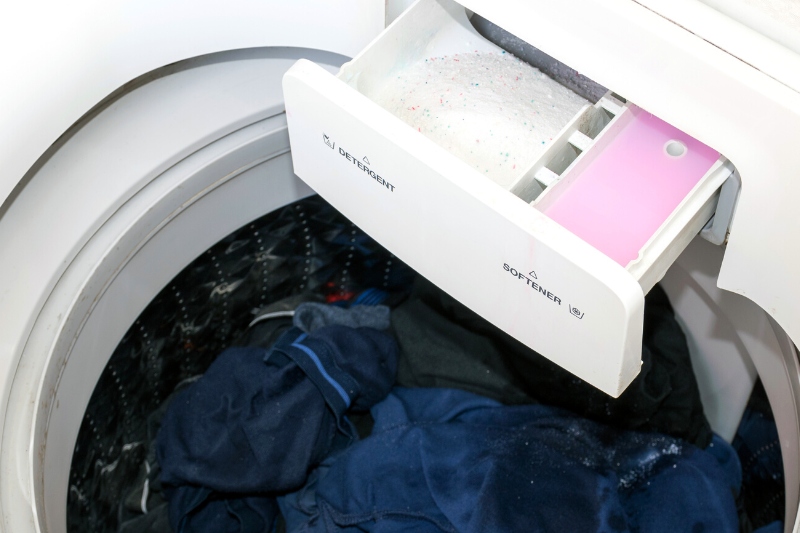
Top-loading washing machines have varying ways of adding fabric softeners to the appliance.
Some models will have a dispenser drawer, like that found on front-loading machines. If this is the case for your washer, add your fabric softener to your washing as described above.
However, if your washing machine doesn’t have a dispenser drawer, you have to add your fabric softener directly to the drum.
This is the most common way of adding softener to a top-loading washing machine, as the design of the appliance means you can add the product to the drum at the correct point during the cycle.
The best time for pouring in the softener is during the rinse cycle. Avoid adding your fabric softener to the drum before this point, as it needs to be diluted by the water in the machine to ensure it is evenly distributed throughout your clothing.
Can You Put Fabric Softener Straight into the Washing Machine Drum?
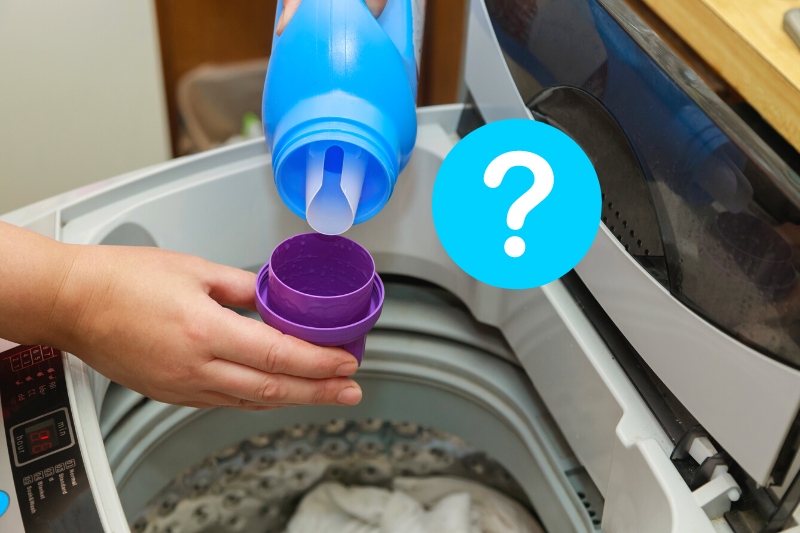
You should only ever put fabric softener straight into the washing machine drum if you own a top-loading machine that doesn’t rely on a dispenser draw.
This is because fabric softener needs to be diluted before it makes contact with your clothing. If you add the product to the drum before the rinse cycle, this cannot occur.
Unfortunately, it is impossible to open the door of a front-loading washing machine during the rinse cycle.
Therefore, you must add the fabric softener to the dispensing drawer so that your appliance can release it at the correct time.
What Happens if You Put Fabric Softener in the Washer Drum?
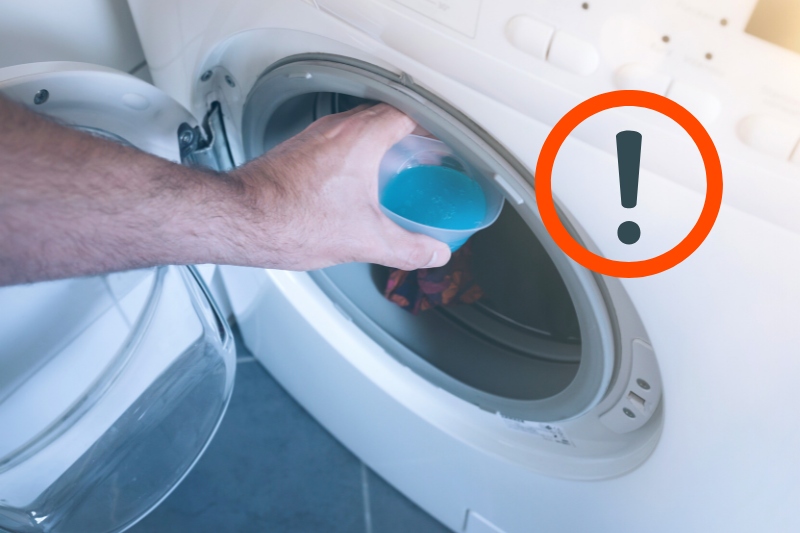
If you do add fabric softener to your washing machine before the rinse cycle, you are likely to notice several issues. These include:
- Dirty clothes: When fabric softener is added to your laundry too early, it will coat the fabric before your laundry detergent has had a chance to work. This means the detergent will not be able to fully penetrate the material, resulting in your clothing coming out of the wash without being properly cleaned.
- Damage to the fabric: When undiluted fabric softer comes into direct contact with your clothing, it may leave behind unwanted stains. Repeated exposure over multiple washes can also cause the material to weaken, meaning your clothes will wear out faster and need to be replaced more frequently.
- Uneven distribution: Failure to properly dilute your fabric softener will also prevent it from being evenly distributed during the wash cycle. This means that some areas of fabric will come out feeling soft, while others will still be rough and scratchy.
If you are experiencing any of these issues despite following the direction outlined above, it is possible that you need to use more fabric softener when doing your laundry.
This is one of the reasons why it is important to add the amount of fabric softener recommended on the product label.
Can You Use Fabric Softener When Hand-Washing Clothes?

If you are handwashing a few items of clothing and still want them to feel soft, don’t worry! Fabric softener can still be used; you just need to ensure it is properly diluted first.
For the best results, you will need to:
- Hand-wash your clothing as you usually would.
- Thoroughly rinse the fabric until all the soapy residue has been removed.
- Place the clothing in a bucket of fresh warm water.
- Dilute a tablespoon of fabric softener with a little warm water in a separate bowl.
- Pour the diluted fabric softener into the bucket and swirl it around to ensure it is evenly distributed.
- Allow your clothing to soak for 5 minutes before thoroughly rinsing the fabric.
- Leave your items to dry.
Do You Have to Use Fabric Softener?
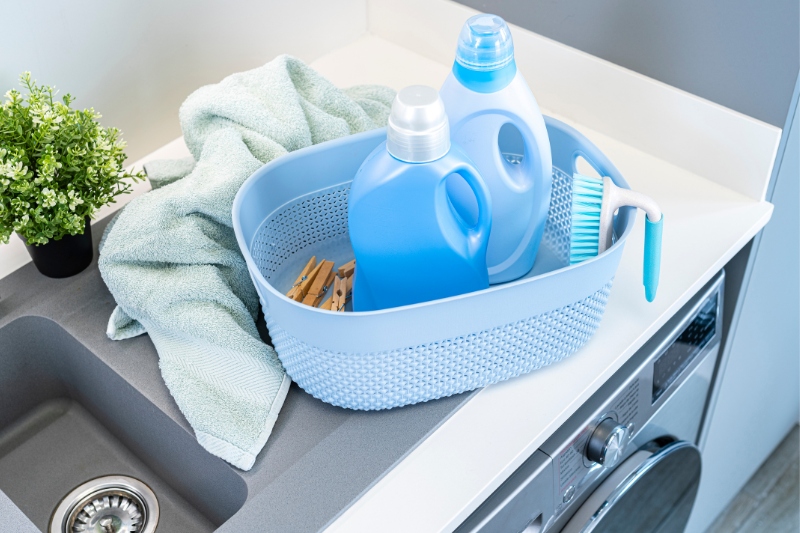
Although many people swear by fabric softener, you don’t have to use it when doing your laundry. As long as you use laundry detergent, your clothing will come out looking and smelling clean.
If you’re on the fence about using fabric softener, the following list of pros and cons can help you make an informed decision.
Pros of using fabric softener
- Softens fabric so that it feels nicer against your skin
- Reduces static cling and wrinkles in the material
- Keeps your laundry smelling clean and fresh for longer
Cons of using fabric softener
- Is not suitable for use on all fabrics (see below)
- Can leave a residue on your clothing and in the machine
- Makes the fabric more flammable
- May trigger allergies
If you want to reap the benefits of fabric softener without some of the cons, there are a number of fabric softener alternatives you can try. These are much less likely to trigger any allergies or leave unwanted residue on your clothing and in the machine.
When Should You Not Use Fabric Softener?
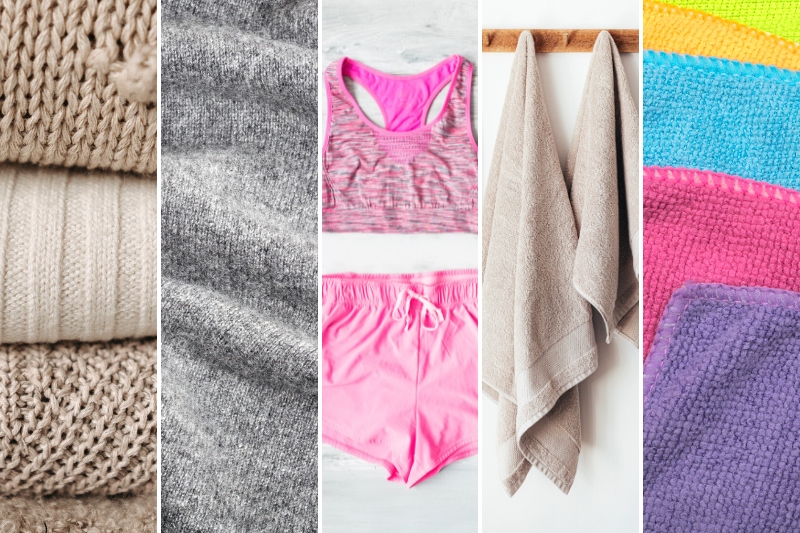
Fabric softener is designed to make your clothes feel soft and smell great, but unfortunately, it cannot be used on all fabrics. Some of the main ones you need to watch out for include:
- Wool
- Cashmere
- Athletic wear
- Towels
- Microfibre cloths
- Water-repellent or flame-resistant items
- Feather-filled items
Fabric softeners will have a negative effect on all of these fabrics and prevent them from doing their job properly.
For example, it will reduce the absorbency of towels and the effectiveness of any water-repellent coatings.
If you are ever unsure whether you can safely use fabric softener on a particular garment, it’s always best to check the item’s care label.
Although there are no specific symbols relating to fabric softener, it will state what material the item is made of.
In some cases, the label may also clearly state, “Do Not Use Fabric Softeners”, if it would be particularly harmful.

Hannah has a passion for cleaning. She worked her way around Australia by cleaning hostels in exchange for free accommodation and used her cleaning skills to bag a job as a chalet host for a luxury ski company in France.
